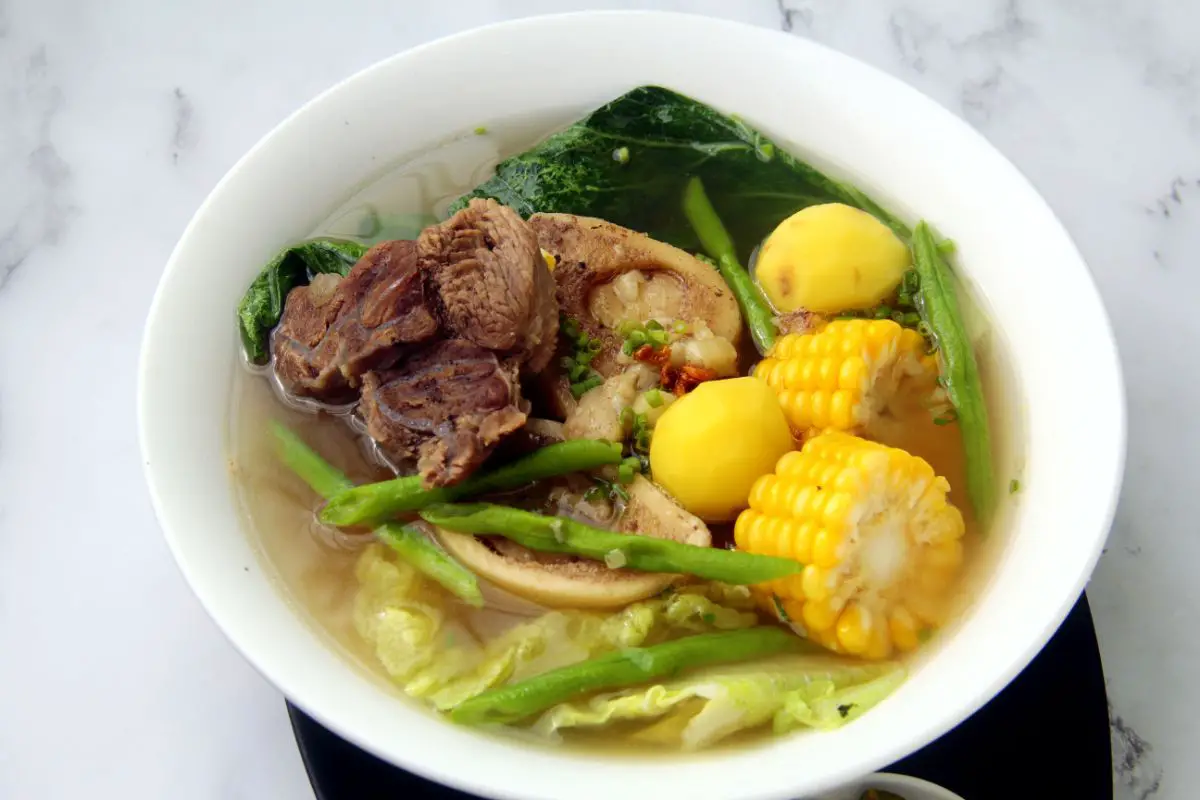Authentic Filipino Food Recipes to Try at Home
Checking out genuine Filipino food dishes offers a possibility to value the detailed flavors and social value behind each recipe. From the well-loved Adobo, with its savory marinate, to the zesty Sinigang that personifies the significance of Filipino convenience, these recipes invite a much deeper understanding of typical cooking techniques. Using fresh, neighborhood components is crucial, as is welcoming communal eating-- a trademark of Filipino culture. As we consider the essential aspects and strategies that specify these culinary prizes, one may question what particular recipes can truly catch the heart of this lively cuisine.
Popular Filipino Cuisines
Filipino food boasts a rich tapestry of tastes and traditions, with over a lots iconic dishes that highlight the nation's varied cultural impacts. Among one of the most widely known dishes is Adobo, a mouthwatering stew commonly made with chicken or pork, marinaded in vinegar, soy sauce, garlic, and seasonings. Its tangy taste profile makes it a staple in Filipino houses.
Another cherished meal is Sinigang, a sour soup commonly made with tamarind, tomatoes, and various vegetables. This meal can include pork, shrimp, or fish, and its refreshing taste is best for cozy environments. For those with a wonderful tooth, Leche Flan-- a luscious caramel custard-- acts as a preferred treat, showcasing the Filipino propensity for abundant, sweet flavors.
Kare-Kare, a passionate oxtail stew with a thick peanut sauce, along with the famous lumpia, or springtime rolls, even more exemplify the selection discovered in Filipino cuisine. Each recipe not only offers unique preferences yet additionally narrates of local components and historic impacts, making Filipino food a lively reflection of its society and heritage.
Vital Components for Filipino Food Preparation
The essence of Filipino food preparation lies in its necessary active ingredients, which offer as the structure for the nation's precious dishes. A variety of flavors and appearances come together, showcasing the varied social influences that form Filipino food.
Secret components consist of rice, the staple that comes with almost every dish, signifying nourishment and neighborhood. Soy sauce, vinegar, and fish sauce (patis) are critical for flavoring, imparting umami and deepness to recipes. Fresh natural herbs like cilantro and basil include fragrant freshness, while garlic, onion, and ginger give a durable flavor base.
Protein sources such as pork, chicken, and fish and shellfish are main to many recipes, typically marinated to boost preference. Vegetables like eggplant, bitter melon, and environment-friendly beans add essential nutrients and equilibrium - Filipino food recipes. Coconut milk is another substantial ingredient, offering creaminess and a refined sweet taste to various stews and desserts
Last but not least, calamansi, a citrus fruit, provides a refreshing tang that elevates recipes and beverages alike. Together, these active ingredients create the dynamic and rich tapestry of tastes that specify Filipino cuisine, making it both calming and distinct. Understanding these principles is vital for any person seeking to duplicate authentic Filipino recipes at home.
Step-by-Step Recipe Overview

Start by preparing your active ingredients. For Adobo, chop the meat right into consistent pieces and season it in soy sauce, vinegar, garlic, and bay leaves for at the very least half an hour. Next off, heat oil in a pan and sauté the garlic and onions till fragrant, then include the marinaded meat, allowing it to brownish evenly.
For Sinigang, begin by steaming water in a useful link pot and including your choice of meat. When tender, integrate tamarind paste or fresh tamarind for that signature sour flavor. Adhere to with vegetables like radish and kangkong, food preparation up until simply tender.

Tips for Authentic Taste
Commonly, accomplishing genuine taste in Filipino dishes pivots on the careful option and therapy of active ingredients. Beginning with fresh, top notch produce, as the vibrancy of veggies and herbs dramatically enhances the recipe's general preference. Staples like garlic, onions, and ginger develop the aromatic foundation for lots of dishes; utilizing them in correct proportions is critical.
Choosing the right healthy protein is similarly important. Conventional adobo typically utilizes poultry or pork, seasoned to soak up the marinade's complete flavor. Additionally, consider sourcing in your area generated or local ingredients, as they can give credibility that store-bought alternatives lack.
Cooking techniques likewise play an important role. Slow-cooking methods, such as braising or stewing, permit flavors to combine wonderfully, while frying can include a satisfying texture. Do not ignore spices; utilizing salt, fish sauce, or soy sauce at the ideal moments can boost a dish considerably.
Serving and Appreciating Filipino Food
Culinary experiences are improved when Filipino food is served with focus to custom and community. The technique of sharing dishes is central to Filipino society, representing unity and hospitality. When serving Filipino meals, consider click to investigate making use of standard serveware, such as clay pots or bamboo baskets, which improve the authenticity of the experience.
Generally, Filipino dishes are delighted in family-style, with a selection of meals positioned at the facility of the table. This common technique encourages communication and permits visitors to example various tastes. A well-curated spread could consist of staples like adobo, sinigang, and lumpia, enhanced by rice, which is a fundamental component of every meal.
Coming with the food with typical spices, such as soy sauce, vinegar, or chili paste, can elevate the eating experience, inviting restaurants to customize their plates to their preferences. Additionally, including neighborhood drinks, like calamansi juice or tuba, can enhance the overall taste account.
Verdict
